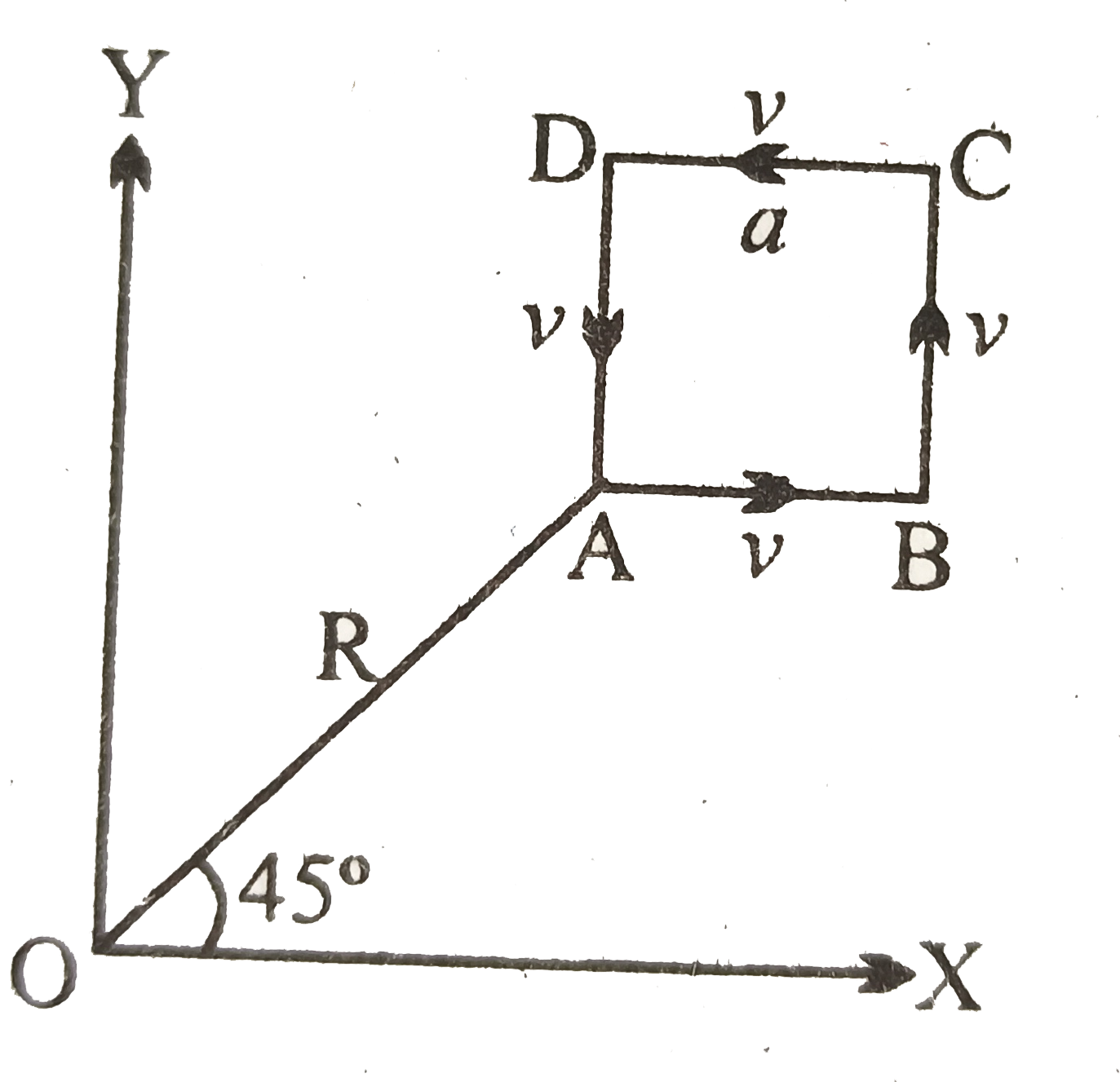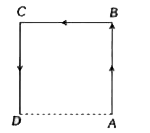A particle P moves with speed .v. along AB and BC, sides of a square ABCD. Another particle Q also starts at a and moves with the same speed but along AD and DC of the same square ABCD. Then their respective changes in velocities are Solution in Telugu
equal in magnitude but different in direction
different in magnitude but same in directions
different both in magnitude and direction
same both in magnitude and direction
The correct Answer is:A
Step by step video, text & image solution for A particle P moves with speed .v. along AB and BC, sides of a square ABCD. Another particle Q also starts at a and moves with the same speed but along AD and DC of the same square ABCD. Then their respective changes in velocities are by Physics experts to help you in doubts & scoring excellent marks in Class 11 exams.
Updated on:21/07/2023Topper's Solved these Questions
- MOTION IN A PLANE BOOK - AAKASH SERIESCHAPTER - MOTION IN A PLANE EXERCISE - Exercise -II
135 Videos
- MOTION IN A PLANE BOOK - AAKASH SERIESCHAPTER - MOTION IN A PLANE EXERCISE - Practice Exercise
84 Videos
- MOTION IN A PLANE BOOK - AAKASH SERIESCHAPTER - MOTION IN A PLANE EXERCISE - Practice Exercise
84 Videos
- MECHANICAL PROPERTIES OF SOLIDSBOOK - AAKASH SERIESCHAPTER - MECHANICAL PROPERTIES OF SOLIDSEXERCISE - EXERCISE - 3
26 Videos
- MOTION IN A STRAIGHT LINEBOOK - AAKASH SERIESCHAPTER - MOTION IN A STRAIGHT LINEEXERCISE - Questions for Descriptive Answers
7 Videos
Similar Questions
A person runs along a circular path of radius 5 m. If he completes half of the circle find the magnitude of the displacement vector, How far the person ran ?
View SolutionA person runs along a circular path of radius 5m. Find the magnitude of the displacement if he runs all the way around the circle ?
View SolutionA person runs along a circular path of radius 5m. Find the magnitude of the displacement if he runs all the way around the circle ?
View SolutionA wire of length 1m and radius 1mm is subjected to a load. The extension is 'x'. The wire is melted and then drawn into a wire of square cross-section of side 1mm. What is its extension under the same load?
View SolutionThree tortoises are located at the vertices of an equilateral triangle whose side equals a They all start moving simultaneously with velocity v constant in modulus with the first tortoise heading continually for the second , the second for the third and the third for the first . They will meet after time
View SolutionFour particles A, B, C and D are situated at the cornerst of a square ABCD of side a at t-0 . Each of particles moves with constant speed (v). A always has its velocity along AB, B along BC, C along CB~ and D along DA . At what time will these particles meet each other ?
View SolutionA particles P moves with speed v along AB and BC , sides of a square ABCD . Another particle Q also starts at A and moves with the same speed but along AD and DC of the same square ABCD . Then their respective changes in velocities are
View SolutionA particle is moving in a circle of radius r with speed v as shown in the figure. The magnitude of change in velocity in moving from P to Q is
View SolutionA particle moves along the side AB, BC, CD of a square of side 25 m with a velocity of 15ms^(-1) Its average velocity is
View Solutionकण R त्रिज्या के व्रत में एकसमान चल v से चल रहा है ज्ञात कीजिय ----
आधे चक्कर में कण की चाल, वेग तथा त्वरण में परिवर्तन ।
View Solutionr त्रिज्या के व्रत में कण P एकसमान चाल v से गति क्र रहा है C वृत का केन्डे तथा AB व्यास है । A व् C के परितः कण P के कोणीय वेगों में अनुपात है ----
View Solutionचित्र में XY - तल में भुजा a का वर्ग ABCD है । m द्रव्य-मान का एक कण इस वर्ग की भुजा पर एकसमान वेग v से चल रहा है । तब निम्न में से कौन - सा कथन, इस कण के मूलबिंदु के परितः कोणीय संवेग L के लिए गलत है -

View Solution□ABCD లో AB=DC మరియు AD=BC, ∠A=90∘ అయిన □ABCD ఒక
View SolutionABCD একটি বর্গক্ষেত্র ও তার বাহুর দৈর্ঘ্য a, AB ও AD বাহুকে যথাক্রমে x ও y অক্ষ ধরে ABCD বর্গক্ষেত্রের পরিবৃত্তের সমীকরণ নির্ণয় করো|
View Solutionएक कण 25 m भुजा वाले वर्ग की भुजाओं AB, BC, CD के अनुदिश 15ms−1 के वेग से गति कर रहा है। इसका औसत वेग हैं।

View Solution
